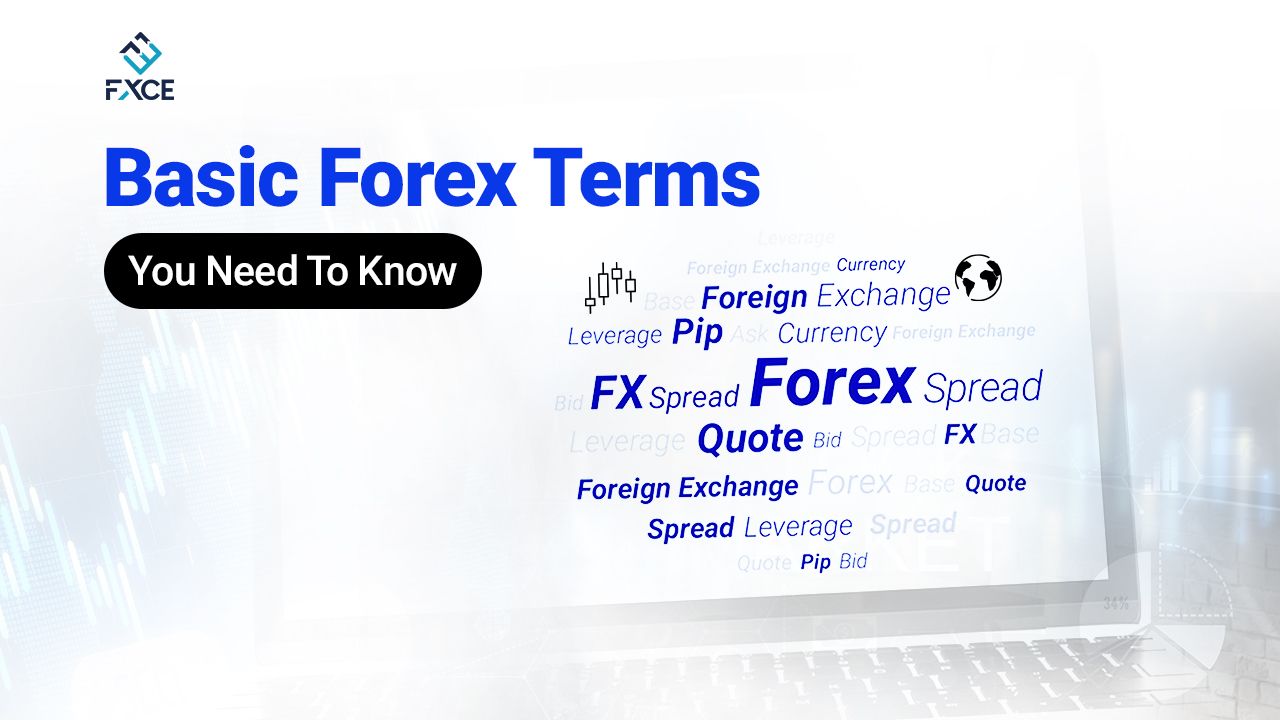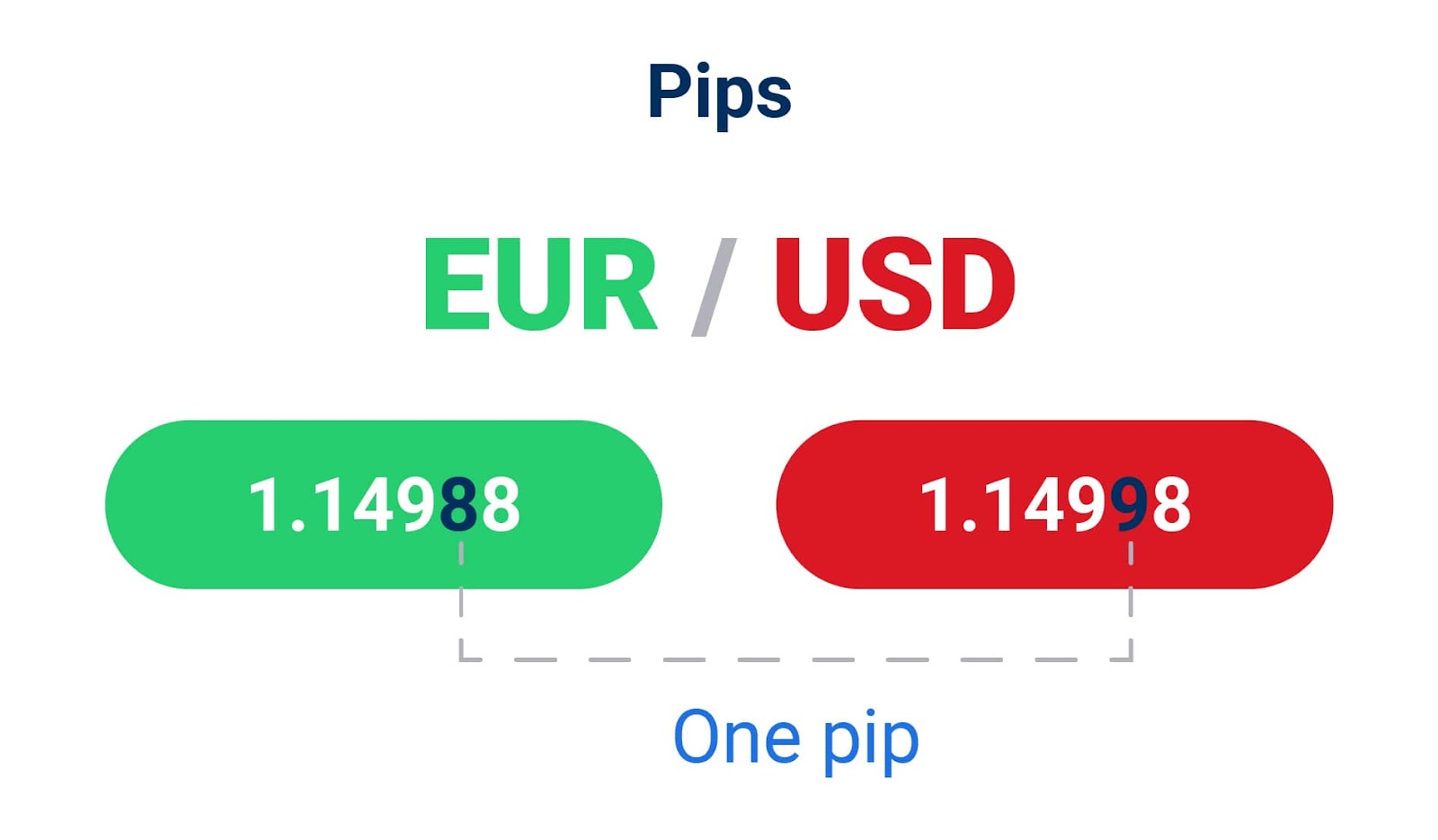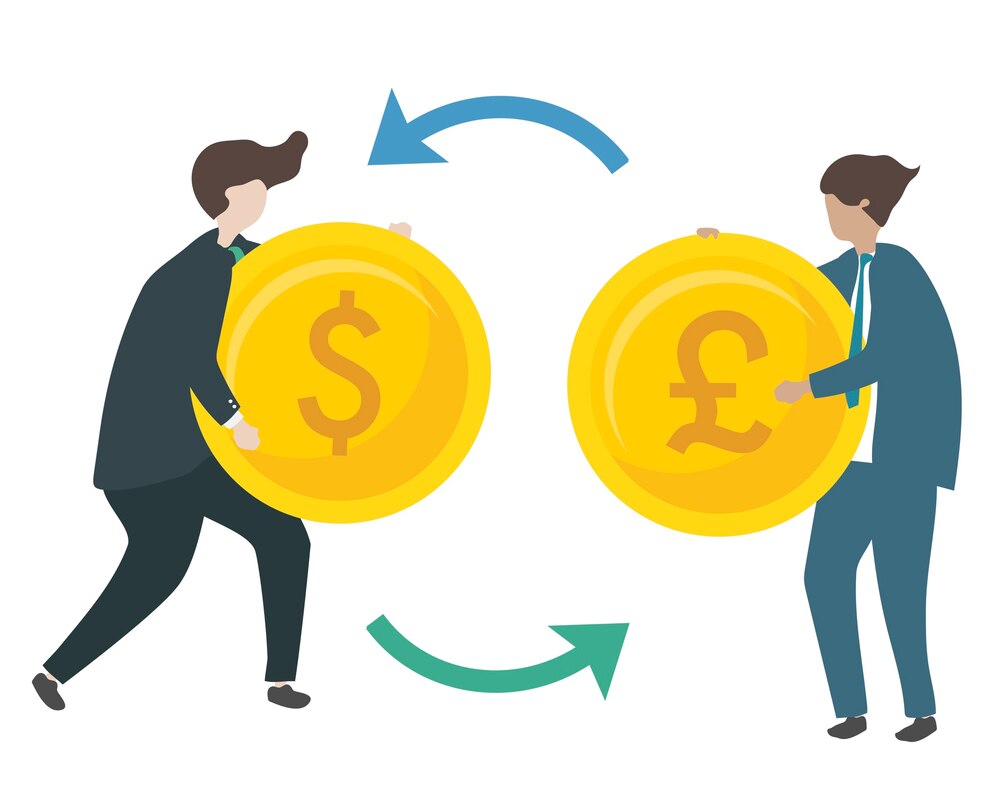

To succeed in the volatile Forex market, you should equip yourself with trading knowledge and abilities. First, you need to understand and master the basic Forex terms. Understanding basic Forex terms will increase your confidence when making smart trading decisions.
Let's learn about basic Forex terms right now.

Some of the basic Forex terms
Spread
We will start with the first basic Forex term. Spread is the difference between the Buy and Ask price of a currency pair. It represents the gap between the price a buyer is willing to pay and the price a seller is willing to accept.
Spread is calculated in the currency and represents the trading fee that the broker takes from executing a trade. When you open a trading position in the Forex market, you pay the spread to your broker.
Spread is also known by two terms Bid and Ask.
Bid: The price at which a trader is willing to buy a currency pair. It is usually lower than the ask price. When you want to sell a currency pair, you will receive the bid price if the trade is successful.
Ask: The ask price is the price at which a trader is willing to sell a currency pair. It is usually higher than the bid price. When you want to buy a currency pair, you will have to pay the ask price to execute the trade.
See more about this basic Forex term “Spread”, here.
Leverage
The next basic Forex term is Leverage. Leverage is considered one of the crucial Forex terms you need to pay attention to in this market. It allows traders to open trading positions larger than the actual amount they have in their accounts. In other words, leverage enables you to “borrow” capital from a broker to trade with a larger amount of money.
For example, if you have a capital account of 1,000 USD and use 1:100 leverage, this means you can open up to 100,000 USD worth of trading positions (1,000 USD x 100). This allows you to enter into deals of greater value, increasing your potential profit opportunities.
However, leverage also comes with a high risk. Because you are trading with more money than the real amount in your account, even little price fluctuations might result in a huge loss. Therefore, it is very important to use leverage carefully and have a risk management plan.
Pip

Pip is the 3rd basic Forex term you need to know. The pip is an important unit of measurement for determining the smallest change in the price of a currency pair. It stands for “percentage in point” or “price interest point”. It is often used to represent the volatility of a currency pair after each trade.
A pip is usually calculated to three or four decimal places, depending on how the currency pair is quoted. For example, with the EUR/USD currency pair, if the price increases from 1.2000 to 1.2001, this equates to a price increase of 1 pip.
The value of each pip will depend on the lot size and the type of account you use. With one standard lot (100,000 currency units), one pip is equivalent to 10 units of the base currency (for example, USD if you trade USD-based currency pairs). If you use a mini lot (10,000 currency units), one pip is equivalent to 1 currency unit of the principal.
Lot
Let's continue with the 4th basic Forex term. Lot is a unit of measurement for trade size. It indicates the number of currency units traded in a particular order. Lot size is used to determine how much you invest in a trade and affect the profit or risk of that one.
Choosing the right lot size is very important in managing risk and trading accounts. When trading with large lot sizes, small price movements can lead to large losses. While trading with small lot sizes, profits can be limited. You need to choose a lot size that is suitable to the level of risk you are able to accept in the trade.
Commission fee
Have you ever heard of the basic term Forex, “commission”? It is usually known as a trading fee. It is a fee that you pay to the broker every time you trade in the financial markets, including the foreign exchange market (Forex). This applies to ECN (Electronic Communication Network) and STP (Straight Through Processing) brokers or those brokers that do not profit from the spread (the difference between the bid and ask prices).
Commissions are usually calculated based on the lot size and are applied both when you open and close the order. It is usually calculated as a fixed amount or a percentage of the trading value.
Major currency pairs

The main currency pair is also one of the Forex terms that many traders often wonder about. It is the most popular and most traded group of currency pairs on the Forex market. Major currency pairs usually include the currencies of the world's major and stable economies. Here is a list of the most popular major currency pairs:
1. EUR/USD: Euro (EUR) and US Dollar (USD)
2. USD/JPY: US Dollar (USD) and Japanese Yen (JPY)
3. GBP/USD: British Pound (GBP) and US Dollar (USD)
4. USD/CHF: US Dollar (USD) and Swiss Franc (CHF)
5. USD/CAD: US Dollar (USD) and Canadian Dollar (CAD)
6. AUD/USD: Australian Dollar (AUD) and US Dollar (USD)
7. NZD/USD: New Zealand Dollar (NZD) and US Dollar (USD)
See details of major Forex currency pairs here.
Margin
This is also one of the basic Forex terms you will hear a lot when trading in this market. Margin is the initial capital required by a trader to open a position. When using leverage, the amount of margin is used to raise the size of your position compared to the money in your account.
For example, if you want to open a $10,000 trading position and the exchange requires 1% margin, this means you must have 1% x 10,000 USD = 100 USD in your account to open this position. Margin is also known as initial margin since it is the amount required to start trade.
Exchange rate
The exchange rate is the price of one currency in terms of another. It indicates how much of the quote currency is needed to purchase one unit of the base currency. Exchange rates are constantly fluctuating due to various economic and geopolitical factors.
Exchange rates can be categorized into two types:
-
Floating (Flexible) Exchange Rate: In a floating exchange rate system, exchange rates are determined by the foreign exchange market based on supply and demand factors. Central banks and governments may intervene occasionally to stabilize extreme fluctuations, but overall, the exchange rates are allowed to fluctuate freely.
-
Fixed Exchange Rate: In a fixed exchange rate system, the value of a currency is pegged to another currency, a basket of currencies, or a commodity like gold. Central banks actively manage their currency's value to keep it within a specified range against the chosen benchmark. This system requires continuous intervention to maintain the desired exchange rate.
This is one of the important basic Forex terms. Understanding exchange rates is essential for businesses engaged in international trade, travelers, investors, and policymakers alike. Exchange rates are a dynamic and intricate aspect of the global financial landscape, and their movements can have far-reaching consequences on economies and individual financial decisions.
Conclusion
We have explored some of the basic Forex terms through the above article. Understanding and mastering these terms will give you more confidence to trade easily in the Forex market. However, these basic Forex terms are only the first step in the journey to conquer this market.
To be successful, traders need to have many factors. Be patient, practice technical and fundamental analysis, and also keep risk management and trading psychology.
Follow the FXCE latest news and updates at the following channels:



